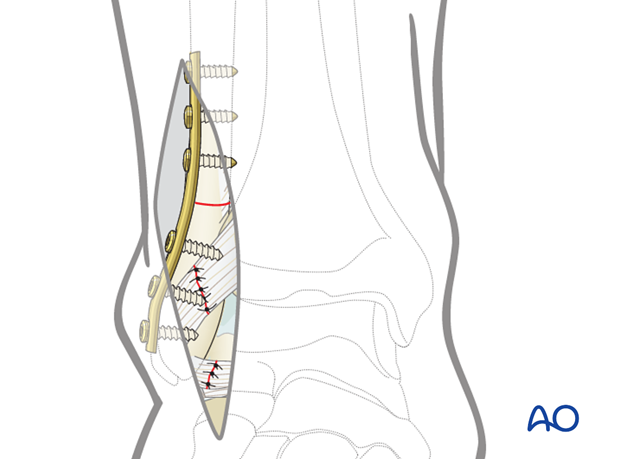Lateral malleolar osteotomy
1. Indications
The lateral malleolar osteotomy is utilized for fixation of the talus when the fracture is in the lateral body of the talus both posteriorly and laterally.
This anatomic area may be impossible to reach accurately without this approach.
Similar to the medial malleolar osteotomy, this lateral approach allows reflection of a bony structure and provides much better visualization of an anatomic area which one can not reach otherwise.
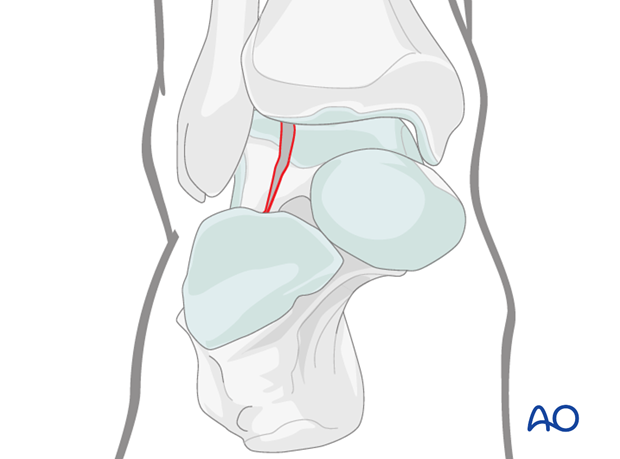
2. Anatomy
Immediately anterior to the fibula lies the superficial branch of the peroneal nerve. Its location is variable and must be protected with this approach. The anterior distal tibiofibular ligaments are incised and these ligaments must be reconstructed because of their structural importance.
The peroneal blood supply is a posterior structure and is not endangered with this approach.
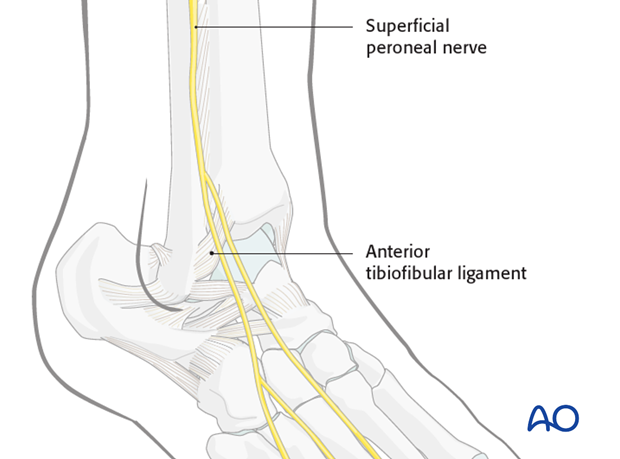
Blood supply to the talus
The deltoid branches are important to supply blood to the medial talar neck and talar body. Branches from the dorsalis pedis supply the talar head and most of the dorsal talar neck. The artery of the tarsal canal coming from branches off of the posterior tibial artery supply most of the talar body.
The peroneal artery has the least contribution laterally.
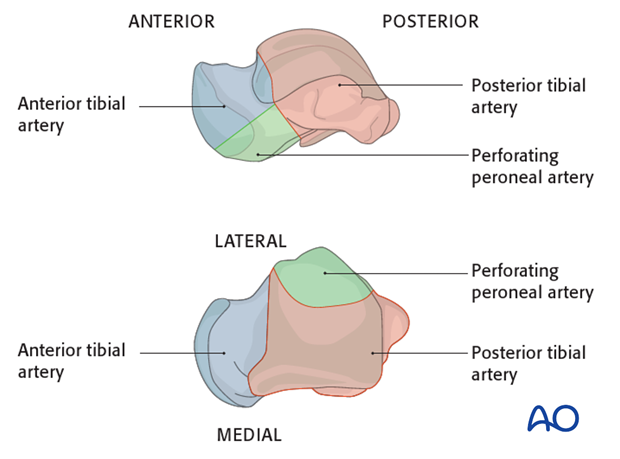
3. Incision
Skin incision
The skin incision is a proximal extension of the anterolateral incision to approach the talus.
Landmarks for this incision are based on the anterior fibula proximally and in line with the fourth ray distally.
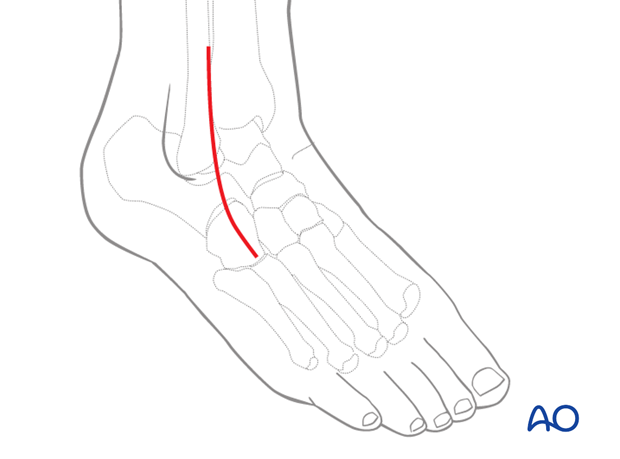
Deep dissection
The superficial branch of the peroneal nerve must be carefully protected.
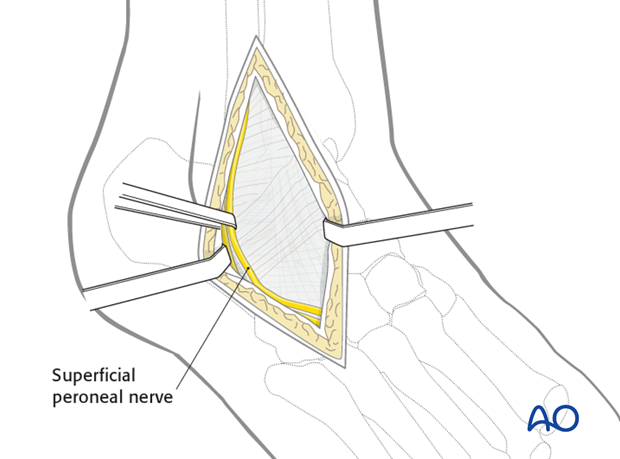
The anterior distal tibiofibular ligaments are incised.
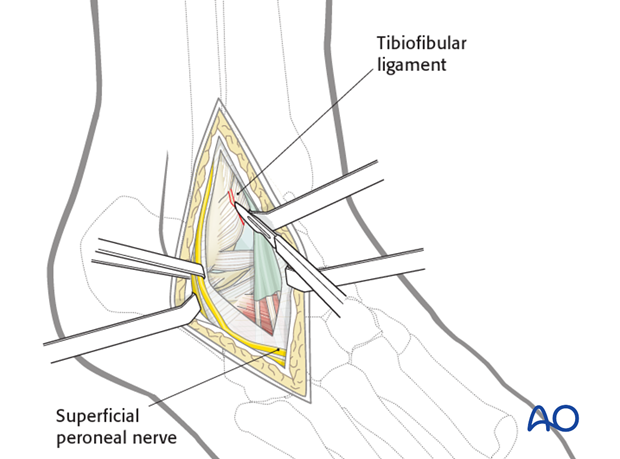
4. The osteotomy
Using image intensification, the fibular osteotomy is planned 3 cm above the joint surface, just above the insertion of the distal tibiofibular ligaments.
This osteotomy should be transverse to allow compression plating at the end of the procedure. One must ensure that the osteotomy is planned at an appropriate level to allow for sufficient fixation of the distal fragment.
The osteotomy is carried out with an oscillating saw.
At the end of the procedure, once the anterior tibiofibular ligaments are reconstructed, stability of the ankle will have been restored.
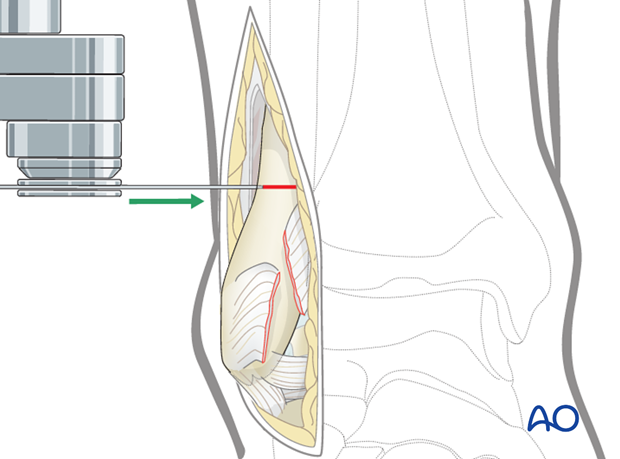
Visualize lateral talus
The osteotomy allows the fibula to roll externally on its posterior soft tissue providing excellent visualization of the lateral talus.
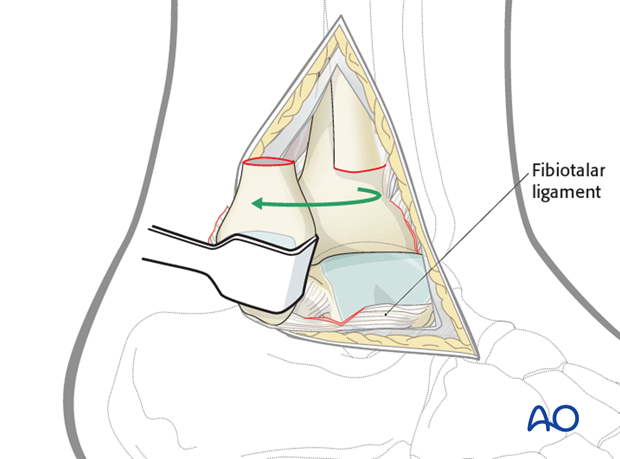
5. Repair of the osteotomy
The lateral surface of the talus is covered with articular cartilage. Therefore, screw heads have to be countersunk. Once the internal fixation of the talus is finished, the fibula is derotated together with its soft-tissue hinge, anatomically reduced and then fixed with a carefully contoured plate. Stability is secured by utilization of the self-compressing property of the LC-DCP which will provide axial compression and secure fixation.
At the end, the anterior distal tibiofibular ligaments should be repaired.
